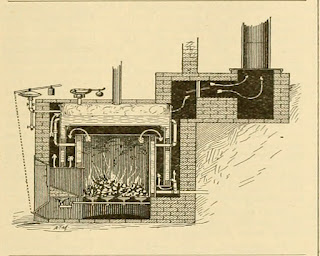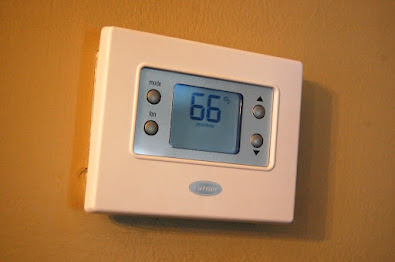How do I choose the best high-efficiency furnace for my needs
Choosing the right high-efficiency furnace can significantly impact your home's energy bills. When shopping for a furnace, consider your needs, budget, and climate. There are many factors to consider when choosing the perfect furnace for your home, so read this guide to get started.
Forced-air furnaces
Forced-air furnaces use warm air to heat the metal in the furnace. They’re the most common furnace type and are usually the cheapest to operate. However, they have two main drawbacks: They can be slow to heat a large area and need a lot of airflows to work correctly.
Gas furnaces
Gas furnaces use natural gas or propane to heat the metal in the furnace. They’re faster than forced-air furnaces but don’t work as well in cold weather because they require more fuel to get warm.
Oil furnaces
Oil furnaces are becoming more popular than electric furnaces because of their lower emissions and greater fuel efficiency. Oil furnaces use a furnace gas to heat the air, which then goes into the fireplace or stove. Electric furnaces use an electric heating element to create heat. They both have pros and cons, so choosing the right one for your needs is essential.
The biggest pro of oil furnaces is that they emit shallow levels of pollutants. One study found that oil furnaces released only 1/5th of the toxins emitted by electric furnaces.
Electric furnaces
Electric furnaces also have pros: they are much more powerful and can generate more heat than oil. This means that they can be used to heat larger spaces quickly.
The factors to consider when choosing a furnace: Tips on choosing the right furnace for your home.
Choosing a furnace can be confusing. There are so many things to consider when purchasing one. Which features should I look out for? What type of installation do I need? How would you go about selecting the perfect furnace?
Let's clear up any confusion surrounding this topic: there is no such thing as the perfect furnace. However, certain factors to consider when choosing the right gas furnace for your home. These include:
- Size and capacity
- Installation method
- Fuel efficiency
- Cost of operation
This article will discuss these factors and provide tips on choosing the perfect gas furnace for your home!
Size and Capacity
When shopping for a furnace, size is almost certainly going to be one of the first things you consider. Most furnaces come in two sizes: standard and mini. Standard furnaces usually measure 6 feet wide by 8 feet tall and hold around 1000 cubic feet of air per hour. Meanwhile, mini furnaces range from 2 feet wide to 4 feet tall and hold between 500 and 750 cubic feet of air per hour.
Generally speaking, smaller furnaces are easier to install than larger ones because they fit into tight spaces. However, if you're installing a furnace yourself, you may find that the standard and mini sizes aren't enough. In this case, you may want to upgrade to a bigger model.
Installation Method
While most people are familiar with forced ventilation systems, there are four different methods of furnace installation: ducted, vented, stack venting, and heat pump. Let's take a closer look at each of them.
Ducted systems use flexible plastic ducts to transport warm air from the furnace to various rooms. This works quite well but makes the entire house feel stuffy. It's also an expensive option.
Ventilated systems use an exhaust fan outside a room's walls to pull smoke and fumes from inside. It provides fresh air to the rest of the house and keeps homes cool. However, it comes with some drawbacks, including noise and dust.
Stack ventilating systems use a chimney to draw smoke and heat from the furnace into the attic, where it escapes into the outdoor environment. The drawback is that the chimney is often difficult to access, which adds time to the installation process.
Heat pumps operate similarly to refrigerators. They pull heat from the outdoors via a condenser coil, then transfer this heat back indoors using an evaporator coil. As far as installation goes, though, this system requires connecting the blower unit to a power outlet and turning it on. Heat pumps generally run quieter than traditional heating systems.
All of these options have their advantages and disadvantages. While ducted systems are inexpensive, they can create a stuffy feeling throughout the house. Ventilated systems allow homeowners to control the home's temperature without sacrificing the quality of indoor air, but they are noisy. Stack ventilating systems offer benefits and drawbacks; however, the biggest downside is that they require a lot of maintenance.
Forced ventilation systems are a great way to keep homes comfortable while minimizing energy costs. Although they aren't always available if you purchase a new furnace, check out our article on the best-forced ventilation systems.
Fuel Efficiency
It might seem obvious, but it bears repeating: the more efficient the furnace, the better it will perform. Gas-powered furnaces tend to be much more fuel-efficient than models powered by electricity. For example, a typical electric heater uses 50% less energy than a gas furnace. With this in mind, you may be wondering what your ideal furnace efficiency is, according to Energy Star.
Cost of operation
The average cost of operation for a furnace ranges from $3-$5 per hour, depending on the type of furnace and the size of the facility. The price also includes maintenance and repairs, as well as fuel costs. It is crucial to remember that these figures vary depending on location and climate, so it is always best to consult with a qualified technician to get an accurate estimate.




Comments
Post a Comment